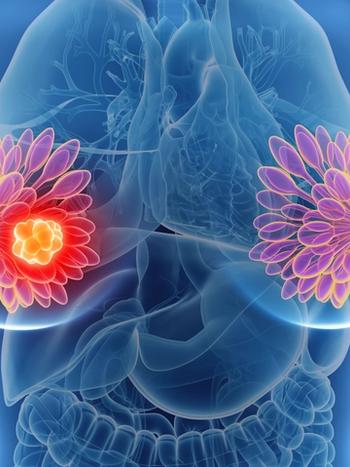
High Response Rates With Larotrectinib in Tumor Types With TRK Fusions
Early-phase data on larotrectinib validate TRK fusions as therapeutic targets and show they lead to tumor-agnostic sensitivity to this agent.
Larotrectinib, a highly selective inhibitor of all three tropomyosin receptor kinase (TRK) proteins, was recently shown to have marked and sustained antitumor activity in patients with TRK fusion–positive cancers, according to an analysis of three phase I and II cohorts.
Recurrent chromosomal fusions involving TRK have been found in a diverse group of cancers in both children and adults. “Biologic models and early clinical evidence suggest that these fusions lead to oncogene addiction regardless of tissue of origin and, in aggregate, may be implicated in up to 1% of all solid tumors,” wrote the study authors, led by Alexander Drilon, MD, of Memorial Sloan Kettering Cancer Center in New York.
The investigators conducted three clinical studies of larotrectinib in patients with TRK fusion–positive cancers: a phase I adult study, a phase I/II study of children, and a phase II study including adolescents and adults. In total, the studies included 55 patients, ranging in age from 4 months to 76 years, and encompassed 17 unique tumor types. The results of the analysis were
The median age of the full cohort of patients was 45.0 years, and 53% were male. About half of the patients (49%) had received zero or one previous systemic chemotherapy regimen. The most common tumor type was salivary gland tumor (22%), followed by other soft tissue sarcomas (20%), infantile fibrosarcoma (13%), thyroid tumors (9%), and other malignancies occurring in 4 or fewer patients.
The overall response rate was 75%, and 13% of these patients had a complete response. Another 13% had stable disease, 9% had progressive disease, and 4% could not be evaluated. The median time to response was 1.8 months, and responses occurred regardless of tumor type, patient age, or specific TRK fusion characteristics. Two patients with advanced infantile fibrosarcoma experienced sufficient tumor shrinkage with larotrectinib to allow for limb-sparing surgery with curative intent; both patients had negative margins after surgery, and they both remained progression-free without larotrectinib treatment after 4.8 and 6.0 months of follow-up.
The median duration of response had not yet been reached upon publication of the study. The same was true for progression-free survival, and at 1 year, 55% of all patients were free from disease progression. At the time of data cutoff, 86% of responders were either continuing treatment or had undergone curative-intent surgery.
Most of the adverse events in the study were grade 1 or 2. The most common grade 3/4 events, regardless of attribution, included anemia (11%), weight increase (7%), neutrophil count decrease (7%), and increased alanine aminotransferase or aspartate aminotransferase (7%). No treatment-related grade 3 adverse events occurred in more than 5% of patients, and no patients discontinued the study drug due to an adverse event.
“Our data not only validate TRK fusions as therapeutic targets but also show that they lead to tumor-agnostic sensitivity to larotrectinib,” the authors wrote. “Screening strategies that include assays with the ability to detect TRK fusions will be needed in order to identify patients who may benefit from larotrectinib.”
Newsletter
Stay up to date on recent advances in the multidisciplinary approach to cancer.

























































































